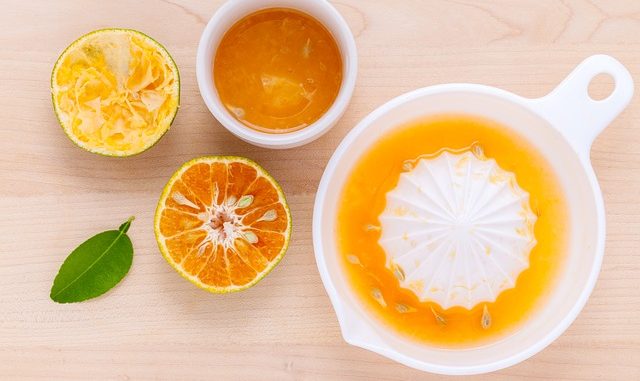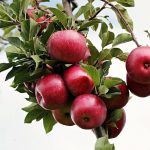
What do we mean when we talk about pomace in foods? Pomace is the name given to skins, seeds and bits of fibre that are left when fruit is pressed in the manufacture of juice. It is a residue and often discarded but there are many benefits to be had from using it as a food source. As we face mounting food shortages there is some value to be had from exploiting a resource which is often discarded. The value of pomace in foods should not be overlooked!
The Current Value Of Pomace
The Food and Agriculture reckons there is 1.6 gigatonnes of agricultural products wasted every year. That amounts to a staggering 27% of the annual global production (FAO Natural Resources Mgt. and Environmental Dept., 2013)!
One of the most interesting processes for food manufacture is extrusion to make a variety of extruded snacks. In the process of extrusion we often call the food product the extrudate.
Pomace is a good source of dietary fibre, both soluble and insoluble. It’s also a good source of nutrients such as polyphenols, colours and even vitamins in some cases.
Pomace in foods which are extruded
Many foods are extruded and the process of extrusion continues to be a valuable contributor to product development and the range of healthy products available. Some of the key factors in extrusion processing are moisture content, temperature of extrusion, screw speed and the type of raw materials used. Clearly, there are many other factors which all have a part to play but when it comes to using pomace in extrusion it is probably easier to think of the listed factors above.
The pomace in foods is valuable as an added material to carbohydrates in extrusion. The key factors of pomace inclusion are its chemical composition and various physical properties that it imparts to the extruded food. Pomace, like dietary fibre will also alter the extrusion process itself such as torque, pressure difference and thrust, and energy consumption. At the chemical level it will change the level of hydration of the material, its density, particle size distribution and crystallinity. Another aspect concerns how much to use relative to the basic feed stock and much of this focuses on starch performance.
A basic extruded food product contains starch. The process of starch gelatinization is fundamental to how the extrudate forms and to the many key sensory elements such as crispness, rigidity, brittleness and so on. Some of the basic measures of extrusion include expansion, brittleness (a sensory and functional measure), the water absorption index (WAI), the water solubility index of the product (WSI).
Adding pomace reduces the overall starch content of the mixture which in turn means there is less water available for gelatinization. This is often viewed as a reduction in water absorption (WAI). The lower the level of water absorption (WAI) the poorer the degree of starch gelatinization.
Pomace, because of its dietary fibre content is greatly influential because of its competition for water. The degree of competition is reflected in the type of dietary fibre within pomace and its availability to bind water versus the type of starch and its physical/chemical state in binding water. Fibre generally has a higher water binding capacity and in many cases a higher water binding affinity than starch.
One other key aspect of the extruded food is its expansion. This is the phenomenon of puffing produced by steam release when the product exists the extruder and the formation and creation of bubbles in the melt, and the degree of collapse of that food.
A high expansion ratio, as measured by the percentage increase in product diameter after extrusion when compared with the die size, equates to increased porosity of the product and either a large number of gas cells, or a number of large gas cells. If you look at an extruded food, it has a relatively hard outer coat due to collapsed gas cells whilst inside there is an expanded inner matrix of the remaining gas cells. This difference determines texture. It is dependent on the degree of expansion which is related to the amount of gas cell space in the extrudate and the integrity of the outer coat. The outer coat is a barrier to moisture ingress. The inner layers determine perception of crispness and brittleness.
The composition of pomace in foods varies
Tomato pomace is a useful waste material because it contains lots of the nutrient, lycopene. Blends of barley flour with tomato pomace were processed in a co-rotating twin-screw extruder (Altan et al., 2008a). In that study they looked at die temperature (140–160 C), screw speed (150–200 rpm) and tomato pomace level (2–10%). They were able to produce an acceptable snack.
The example given is a good one for illustration of the importance of the water solubility index (WSI) in extrusion. The WSI relates to the amount of soluble componentry in an extrudate. It indicates to some extent that large molecules (polyerms etc.) have been degraded. The Altan study showed that adding pomace led to an increase in WSI. Other studies contradict this with a reduction in WSI. The increase in WSI may have been due to greater starch damage from extrusion and/or a higher amount of dietary fibre released from the pomace.
The same group from Gazientep and University of California looked at grape pomace and barley flour (Altan et al., 2008b).
Corn starch is often used to make extruded snacks. Various types of pomace have been tried in combination with corn starch to produce extruded foods (Wang et al., 2019). It seems the type of pomace is an important factor, especially on dietary fibre quality in both the corn starch which supplies resistant starch and the pomace used.
The type of fruit is important. The expansion value in the extrudate from highest to lowest is apple > cranberry > blueberry > grape at 200 g/kg moisture content (Wang et al., 2019).
Apple pomace contains mainly skins with insoluble pectin, some soluble pectin and various celluloses. One study mixed apple pomace in a 5 to 10% w/w blend with corn flour. The feed moisture was 10.5%, a screw speed of between 60 and 100 rpm, and an extrusion temperature of 150 to 200 C (O’Shea et al., 2014). At the highest screw speeds, the extrudate had a higher bulk density, a lower expansion ratio, reduced porosity, lower moisture and higher level of starch degradation. The fiber content from the pomace altered the expansion ratio as well as texture and moisture content.
Cherry pomace has been added to corn starch at levels of 5% to 15%. The feed moisture was 15.5% with an extruder screw speed of 150 to 250 rpm operated at a temperature of 140 C. In this example, the radial expansion ratio increased with 5% pomace addition compared to the control but decreased significantly at 15% addition. There was no effect on the phenolic content following extrusion (Wang et al., 2017).
Dietary fibre, when added to corn starch has different effects on expansion of an extrudate. Total and insoluble fibre has a negative impact on the amount of expansion of an extruded food. The converse is that soluble fibre such as pectin improves expansion. An addition of 30g of pomace into 100g of corn starch is ideal for extrusion purposes.
It is thought that the level of sugar in the pomace is important in improving expansion level although there are probably different levels of interaction of sugar with the various types of dietary fibre in the pomace and with starch.
Regarding pomace in foods as a waste material is clearly a mistake. Not only is it a great source of dietary fibre and vitamins It can also provide a useful ingredient in the production of extruded foods.
References
Altan, A., McCarthy, K.L., Maskan, M. (2008a) Evaluation of snack foods from barley-tomato pomace blends by extrusion cooking. J. Food Engineering 84 pp. 231-242
Altan, A., McCarthy, K. L., & Maskan, M. (2008). Twin-screw extrusion of barley–grape pomace blends: Extrudate characteristics and determination of optimum processing conditions. Journal of Food Engineering, 89(1), pp. 24-32.
, , & (2014). Enhancing an extruded puffed snack by optimising die head temperature, screw speed and apple pomace inclusion. Food and Bioprocess Technology, 7, pp. 1767–1782. https://doi.org/10.1007/s11947-013-1181-x
, , , , , & (2017). Impacts of the particle sizes and levels of inclusions of cherry pomace on the physical and structural properties of direct expanded corn starch. Food and Bioprocess Technology, 10, pp. 394–406 (Article). .
Wang, S., Gu, B. J., & Ganjyal, G. M. (2019). Impacts of the inclusion of various fruit pomace types on the expansion of corn starch extrudates. LWT, 110, pp. 223-230. (Article)


Leave a Reply